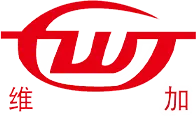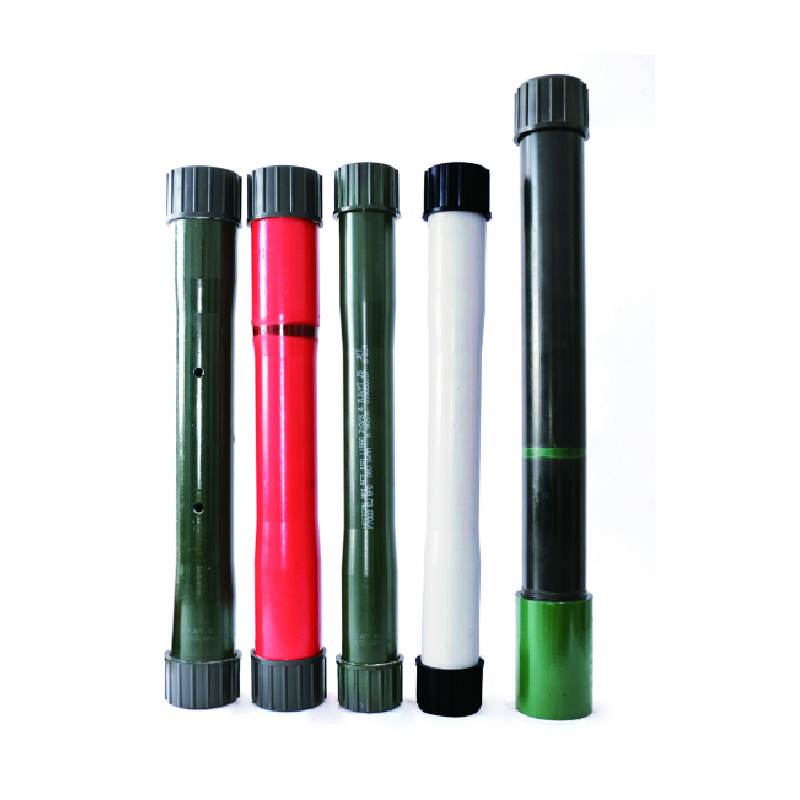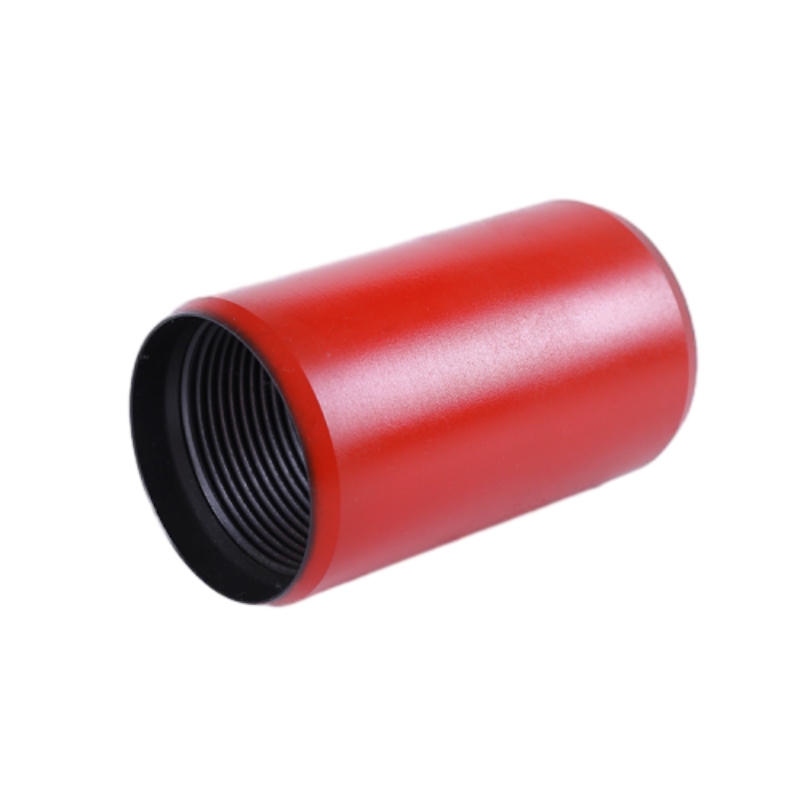Top Pup Joint Manufacturers for Oil & Gas | Tubing Solutions
Understanding Tubing Pup Joints: A Critical Component in Oil & Gas Operations
In the intricate world of oil and gas exploration and production, precision-engineered components are paramount to ensuring operational efficiency, safety, and longevity of drilling and completion strings. Among these critical elements, the pup joint manufacturers play a pivotal role, providing indispensable connectors that enable the precise spacing of downhole equipment. A tubing pup joint, specifically, is a short length of tubing used to adjust the overall length of the tubing string to achieve exact spacing requirements for various downhole tools, packers, and other completion components within the wellbore. These specialized pipes, typically ranging from 2 to 12 feet in length, are manufactured to the same exacting specifications as standard tubing and casing, adhering to stringent industry standards such as API 5CT. Their utility extends across a vast array of applications, from adjusting nipple profiles, sliding sleeves, and landing nipples to providing necessary transitions in complex multilateral well designs or horizontal completions. The meticulous design and manufacturing of these components are crucial because even a slight deviation in length or thread quality can lead to significant operational setbacks, including potential leaks, string integrity issues, or the inability to seat downhole tools properly, resulting in costly non-productive time and potential environmental hazards. Therefore, the selection of reliable and high-quality pup joints is not merely a matter of procurement but a strategic decision that directly impacts the success and safety of drilling and production endeavors. Leading manufacturers prioritize material integrity, precise machining, and rigorous quality control to ensure that each pup joint performs flawlessly under the extreme pressures, temperatures, and corrosive environments characteristic of oil and gas wells, safeguarding investments and upholding operational excellence across the entire lifecycle of a well. This foundational understanding underscores why the choice of a reputable pup joint manufacturers is a decision demanding thorough due diligence and a comprehensive understanding of their capabilities.
The Advanced Manufacturing Process of Pup Joints: Precision and Durability
The production of tubing pup joints is a sophisticated process that demands exceptional precision, advanced engineering, and strict adherence to industry standards, setting premier pup joint manufacturers apart in the global energy market. The journey begins with the selection of premium raw materials, typically high-grade steel alloys such as J55, K55, N80, L80, P110, Q125, and higher grades, specifically chosen for their strength, ductility, and resistance to corrosive environments, including H2S and CO2. For applications in extremely harsh conditions, specialized corrosion-resistant alloys (CRAs) like Duplex, Super Duplex, and Nickel-based alloys are often utilized, ensuring extended service life and reliability. The manufacturing process generally involves several critical stages, beginning with seamless pipe production through hot rolling or cold drawing processes, which ensures a uniform wall thickness and concentricity, vital for maintaining structural integrity under high pressure. This is often followed by precision CNC machining of the pipe ends, where the exact threads are cut. These threads, conforming to API specifications (e.g., EUE - External Upset Ends, NUE - Non-Upset Ends, or premium proprietary connections), are crucial for creating a robust, leak-proof seal when joined with other tubing components. Following the threading, a rigorous heat treatment process is applied to achieve the desired mechanical properties, such as yield strength, tensile strength, and hardness. This might involve normalizing, quenching, and tempering to enhance the material’s performance characteristics, ensuring it can withstand the extreme downhole conditions it will encounter. After heat treatment, non-destructive testing (NDT) methods are employed, including magnetic particle inspection, ultrasonic testing, and electromagnetic inspection, to detect any surface or internal flaws that could compromise the joint's integrity. Hydrostatic testing is then performed to verify the pressure containment capability of each pup joint, simulating downhole conditions to ensure no leaks occur. Furthermore, visual inspections, dimensional checks using precise gauges, and thread profile inspections are meticulously carried out to guarantee every aspect meets or exceeds API 5CT and client-specific requirements. For instance, in petrochemical applications, where the risk of corrosion is high due to the presence of aggressive fluids, pup joint manufacturers often apply specialized internal and external coatings, such as epoxy, PTFE, or ceramic-reinforced layers, providing superior corrosion resistance and extending the lifespan of the string, thereby reducing maintenance costs and operational downtime. In complex applications like deepwater drilling or unconventional shale plays, where multi-directional forces and extreme temperatures are common, pup joints are designed with enhanced fatigue resistance and superior connection integrity, offering significant advantages in terms of safety and operational continuity. The comprehensive quality assurance and control (QA/QC) system throughout these stages ensures that each tubing pup joint, from material sourcing to final inspection, is produced to the highest standards, guaranteeing its performance and reliability in the demanding oil and gas environment.
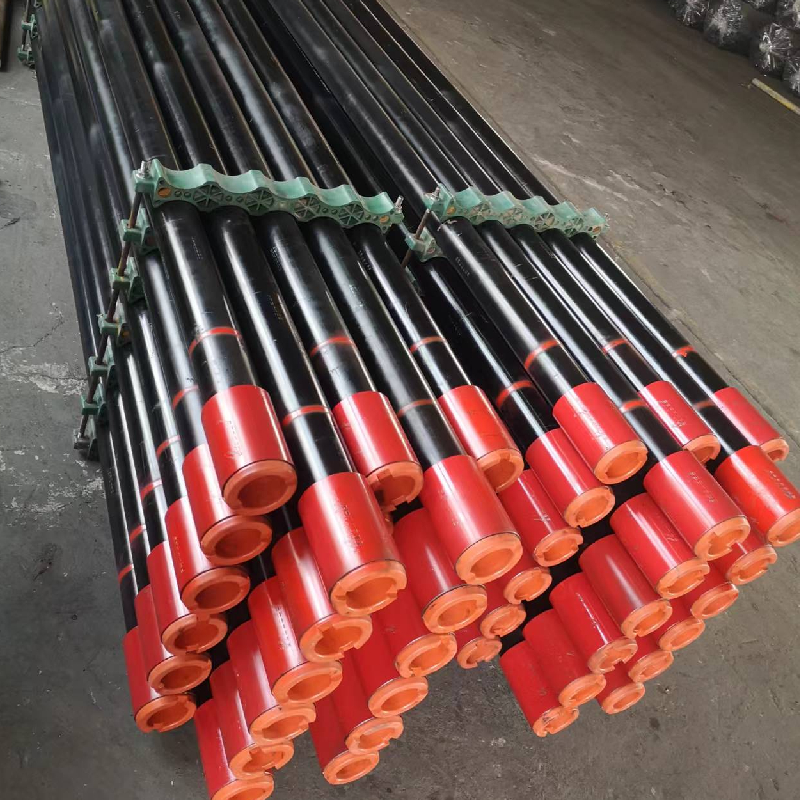
Illustrative Diagram: Key Stages in the Manufacturing of Tubing Pup Joints.
Technical Parameters and Specifications: A Deeper Dive into Tubing Pup Joint Characteristics
The performance and compatibility of tubing pup joints are critically defined by a precise set of technical parameters and specifications, which are meticulously adhered to by reputable pup joint manufacturers. These parameters are not merely numbers; they represent the engineering integrity and functional capabilities that dictate how a pup joint will perform under the rigors of downhole conditions. Key specifications include the Outer Diameter (OD), which typically ranges from 1.050 inches to 4.5 inches, matching standard tubing sizes to ensure seamless integration into the production string. Wall Thickness (WT) is another crucial dimension, directly influencing the joint's burst and collapse resistance; thicker walls generally denote higher pressure ratings, critical for high-pressure, high-temperature (HPHT) applications. The Length of pup joints is standardized at various intervals, commonly 2, 4, 6, 8, 10, or 12 feet, allowing operators to achieve precise spacing for specific downhole equipment or to adjust for unexpected variations in string length during installation. Material Grade is perhaps one of the most significant parameters, directly correlating to the steel's metallurgical properties and mechanical strength. As mandated by API 5CT, grades like J55, K55, N80 (Type 1 and Q), L80 (Type 1, 9Cr, 13Cr), P110, and Q125 each possess distinct minimum yield strength and tensile strength values, making them suitable for different depths, pressures, and corrosive environments. For instance, L80 13Cr is frequently chosen for its superior corrosion resistance in mildly sour environments, while P110 is preferred for its high strength in deep, high-pressure wells. Thread Type and Connection are fundamental for sealing integrity and load-bearing capacity. Common API connections include Non-Upset (NUE) and External Upset (EUE) for standard applications, while premium connections are increasingly utilized in challenging wells requiring superior sealability, torque, and tensile strength. These proprietary connections often feature metal-to-metal seals, optimized thread forms, and integral designs to minimize potential leak paths and enhance fatigue life, providing significant advantages in wells experiencing high vibration or bending stresses. Surface Finish and Coating, though seemingly minor, play a crucial role in extending the life of the pup joint, especially in corrosive well fluids. Internal plastic coatings (IPC) or specialized anti-corrosion treatments can significantly mitigate internal erosion and corrosion, enhancing longevity and reducing the total cost of ownership. Every reputable pup joint manufacturers provides comprehensive documentation detailing these specifications, ensuring full traceability and compliance with international standards, allowing engineers and procurement specialists to select the optimal pup joint for their specific operational demands, thereby guaranteeing the structural integrity and operational success of the entire production string.
Typical Tubing Pup Joint Specifications
| Parameter | Common Range/Types | Relevant API Standard | Application Note |
|---|---|---|---|
| Outer Diameter (OD) | 1.050" - 4.5" | API 5CT | Matches standard tubing sizes. |
| Wall Thickness (WT) | Typically 0.113" - 0.472" (variable by OD) | API 5CT | Influences burst/collapse strength. |
| Length | 2 ft, 4 ft, 6 ft, 8 ft, 10 ft, 12 ft | API 5CT | For precise spacing of downhole tools. |
| Material Grade | J55, K55, N80 (Type 1/Q), L80 (Type 1/9Cr/13Cr), P110, Q125, CRAs | API 5CT | Determines strength and corrosion resistance. |
| Thread Type | NUE, EUE, LTC, STC, BTC, Premium Connections | API 5B, API 5CT | Ensures sealing integrity and load transfer. |
| Heat Treatment | Normalized, Quenched & Tempered, Normalized & Tempered | API 5CT | Optimizes mechanical properties. |
| Hydrostatic Test Pressure | Up to 10,000 psi (varies by grade/size) | API 5CT | Verifies pressure containment capability. |
| Surface Finish | Bare, Mill Varnish, External Coating, Internal Plastic Coating (IPC) | N/A (Client/application specific) | Corrosion protection, friction reduction. |
This table provides a generalized overview; specific project requirements will necessitate precise adherence to API 5CT and potentially more stringent proprietary standards. The expertise of pup joint manufacturers lies in their ability to consistently meet these rigorous specifications while providing components that can withstand the incredibly demanding operating conditions found in oil and gas production.
Application Scenarios and Industry Trends: The Versatility of Pup Joints in Oil and Gas
The application of tubing pup joints is widespread across the entire spectrum of oil and gas operations, underpinning the integrity and functionality of production strings in diverse well environments. Their primary role in pup joint oil and gas applications is to ensure precise spacing of downhole components, which is critical for the effective deployment and operation of various tools and equipment. For instance, in conventional vertical wells, pup joints are essential for accurately locating landing nipples, which are vital for setting plugs, flow control devices, and other intervention tools, ensuring that they are seated at the correct depth for optimal production. In more complex horizontal and multilateral wells, which are increasingly common in unconventional resource development, pup joints facilitate the integration of numerous sections, including intelligent completions with fiber optics, multilateral junctions, and extended-reach laterals. They are used to adjust the length of the tubing string to properly seat packers, which isolate different zones, and sliding sleeves, which allow for selective production or injection. The precise length adjustment provided by pup joints is indispensable when running completion equipment, enabling operators to perfectly align the string with pre-determined reservoir targets or to compensate for slight variations in the drilled depth. Beyond spacing, their robust design makes them suitable for high-pressure, high-temperature (HPHT) environments, deepwater applications, and wells with significant corrosive elements like H2S, CO2, and chlorides. The industry trend towards deeper, hotter, and more corrosive wells, particularly in offshore and unconventional plays, has driven significant advancements in pup joint technology, compelling pup joint manufacturers to innovate with higher-grade materials, advanced threading, and specialized coatings. For example, in deepwater operations, pup joints crafted from super duplex stainless steel or nickel alloys are frequently employed due to their superior resistance to chloride-induced stress corrosion cracking and extreme pressures, ensuring the longevity and reliability of subsea infrastructure. Similarly, in shale gas production, where wells often involve long horizontal sections and multi-stage hydraulic fracturing, pup joints with premium connections are preferred to withstand the repetitive stress cycles and high internal pressures during frac operations, minimizing the risk of connection failure. Furthermore, the increasing adoption of digital oilfield technologies, including downhole sensors and automated control systems, demands pup joints that can seamlessly integrate with intelligent completions, requiring precise dimensional tolerances and often specialized internal profiles. This evolution highlights that modern pup joints are not just simple pipe connectors but highly engineered components that must meet the dynamic and evolving demands of the global energy industry, enabling safer, more efficient, and more productive hydrocarbon extraction.
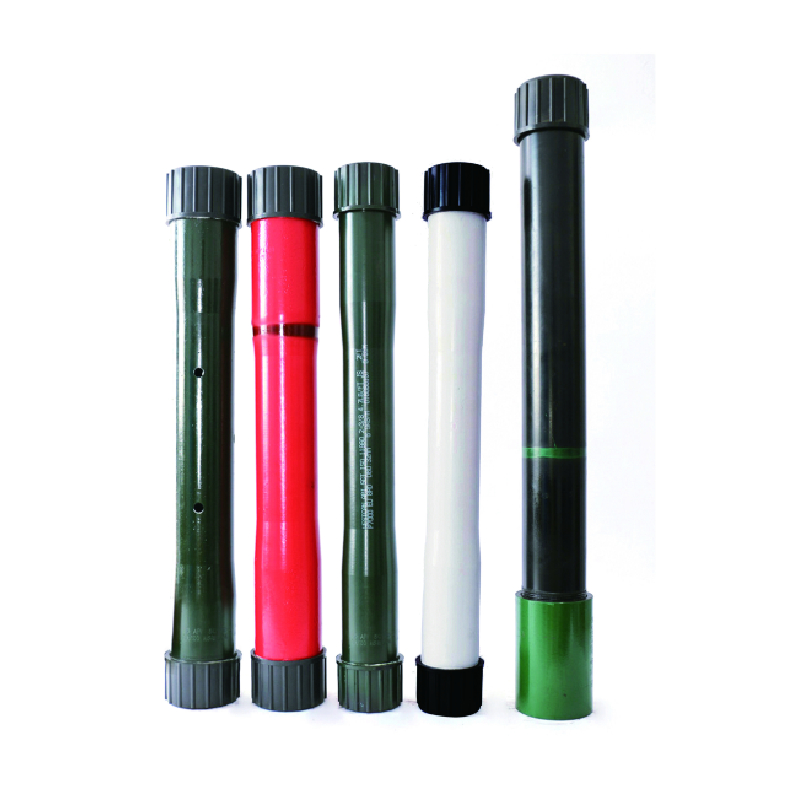
Visual Representation: Tubing Pup Joint in a Typical Downhole Configuration.
Technical Advantages and Performance: Why Quality Pup Joints Matter
The technical advantages offered by high-quality tubing pup joints from specialized pup joint manufacturers are profound, directly contributing to enhanced well safety, operational efficiency, and overall project economics. One of the foremost advantages lies in their superior material integrity and precise dimensional control. Premium pup joints are manufactured from carefully selected raw materials, often subjected to stringent metallurgical testing to ensure homogeneity and freedom from defects. This meticulous material selection, coupled with advanced heat treatment processes, ensures that the pup joints possess optimal mechanical properties, including high yield strength, tensile strength, and impact toughness, enabling them to withstand the immense axial, torsional, and bending loads encountered during installation and throughout the well's operational life. Furthermore, the precision of thread machining is a critical advantage. High-precision CNC machining ensures that threads (whether API standard or proprietary premium connections) are cut to exact specifications, resulting in perfect make-up, superior sealability, and resistance to galling and corrosion. This precise threading minimizes potential leak paths, a significant concern in high-pressure gas wells or those containing corrosive fluids like H2S and CO2, where even minor leaks can lead to catastrophic failures or environmental incidents. The application of sophisticated corrosion-resistant coatings, such as internal plastic coatings (IPC), not only protects the metal from corrosive downhole fluids but also reduces friction during fluid flow, potentially enhancing production efficiency and extending the service life of the entire tubing string. For example, in a specific case study involving a highly corrosive sour gas well in the Middle East, a client switched from standard API pup joints to those with L80 13Cr material and an advanced IPC from a top-tier pup joint manufacturers. This change resulted in a documented 40% reduction in workover frequency related to tubing integrity issues over a three-year period, leading to substantial cost savings and minimized production downtime, illustrating the tangible benefits of investing in superior corrosion resistance. Moreover, the rigorous non-destructive testing (NDT) and hydrostatic pressure testing performed by leading manufacturers ensure that each pup joint can withstand its rated working pressure and is free from critical flaws, providing an unparalleled level of reliability and peace of mind for operators. This comprehensive quality assurance process minimizes the risk of downhole failures, which can be exceptionally costly to remediate, often involving extensive workover operations, lost production, and potential environmental liabilities. By prioritizing these technical advantages, pup joint manufacturers empower operators to execute complex completion designs with confidence, knowing that every component in their tubing string is designed and manufactured to perform optimally under the most demanding conditions, ultimately safeguarding personnel, assets, and the environment while maximizing hydrocarbon recovery.
Manufacturer Comparison and Selection Criteria: Choosing the Right Partner
Selecting the right pup joint manufacturers is a critical decision that significantly impacts the reliability, cost-effectiveness, and overall success of any oil and gas project. The market is populated by numerous suppliers, but not all are created equal in terms of quality, capability, and service. Discerning buyers must look beyond mere pricing and evaluate manufacturers based on a comprehensive set of criteria that align with their operational demands and long-term strategic goals. Foremost among these is a manufacturer's adherence to and certification under international standards such as API 5CT and ISO 9001. These certifications are not just badges; they represent a commitment to stringent quality management systems, traceable manufacturing processes, and consistent product quality, indicating that the manufacturer has undergone rigorous audits by independent bodies to verify their compliance. Experience and specialization in pup joint oil and gas applications are also paramount; a manufacturer with decades of experience in the industry will possess invaluable insights into various downhole challenges and the specific requirements for different well types, from conventional to deepwater HPHT environments. Their track record of successful deliveries and strong client testimonials can provide further assurance of their capabilities. Beyond standard product offerings, the ability of pup joint manufacturers to provide customized solutions is a significant differentiator. This includes the capacity to produce pup joints in non-standard lengths, with specialized thread connections (proprietary premium connections), or from exotic corrosion-resistant alloys (CRAs) to meet unique well conditions or specific completion designs. A manufacturer's investment in advanced manufacturing technology, such as state-of-the-art CNC machining centers, automated inspection systems, and sophisticated heat treatment facilities, reflects their commitment to precision and efficiency, directly translating into superior product quality and reduced lead times. Furthermore, evaluating their quality control protocols, including detailed non-destructive testing (NDT) capabilities and comprehensive material traceability from mill to finished product, is essential to ensure that every pup joint meets the highest performance standards. Supply chain reliability and logistical capabilities are also critical considerations, especially for projects in remote or challenging locations. A manufacturer with a robust global distribution network and efficient logistics can ensure timely delivery, minimizing project delays and associated costs. Finally, customer support, including pre-sales technical consultation, responsive after-sales service, and warranty policies, underscores a manufacturer's commitment to long-term partnerships rather than just transactional sales. By meticulously evaluating potential pup joint manufacturers against these criteria, operators can secure components that not only meet their immediate technical specifications but also contribute to the long-term integrity and profitability of their assets.
Comparative Analysis: Key Attributes of Leading Pup Joint Manufacturers
| Attribute | Manufacturer A (Example) | Manufacturer B (Example) | Manufacturer C (Example) |
|---|---|---|---|
| API 5CT & ISO 9001 Certified | Yes (API 5CT, ISO 9001:2015) | Yes (API 5CT, ISO 9001:2008) | Yes (ISO 9001:2015) |
| Experience (Years in Industry) | Over 30 years | 15-20 years | Over 40 years |
| Customization Capability | High (Special lengths, CRAs, premium threads) | Medium (Standard customization) | Very High (Full engineering support) |
| Nondestructive Testing (NDT) | Full Range (MPI, UT, EMI, Eddy Current) | Limited (MPI, UT) | Comprehensive In-house (Advanced Phased Array UT) |
| Lead Time (Typical) | 4-6 weeks (stock items faster) | 6-8 weeks | 3-5 weeks (optimized supply chain) |
| Global Reach/Logistics | Strong global network | Regional focus | Extensive, highly efficient logistics |
| After-Sales Support | Good (Technical support, field service) | Basic (Product warranty only) | Excellent (24/7 technical, on-site support) |
This table illustrates how a detailed comparison can highlight key strengths and potential gaps among different pup joint manufacturers, enabling informed decision-making based on specific project requirements and priorities.
Customization Solutions and Illustrative Case Studies: Tailored Excellence
The dynamic and often unpredictable nature of oil and gas reservoirs necessitates that leading pup joint manufacturers offer highly specialized and customized solutions, moving beyond standard product offerings to address unique downhole challenges. This capability is paramount for operators facing extreme pressures, corrosive fluids, or complex well geometries, where off-the-shelf components might fall short of performance requirements. Customization can involve several critical aspects, beginning with non-standard lengths, which are often required to achieve very specific spacing for specialized downhole tools or to compensate for unexpected length variations during string assembly. For example, a deepwater exploration project might require a precise 5.5-foot pup joint to perfectly seat a specific subsea tree component, rather than relying on standard 6-foot or 8-foot increments. Furthermore, customization extends to material selection; while API grades cover a broad range, certain wells demand exotic corrosion-resistant alloys (CRAs) like Inconel, Hastelloy, or super-duplex stainless steels, which offer unparalleled resistance to severe H2S, CO2, and chloride environments, significantly extending the life of the tubing string in ultra-sour or high-salinity wells. Beyond materials, bespoke threading solutions are a common customization. While API connections are robust, premium proprietary connections from specialized pup joint manufacturers often feature enhanced metal-to-metal seals, optimized thread forms, and integral designs that provide superior sealability, torque, and fatigue resistance, critical for wells experiencing high vibration, bending, or extreme pressure cycling. These connections can minimize leakage paths and improve make-up efficiency, reducing rig time and associated costs. For instance, in a specific application case for an operator developing an HPHT gas field in Southeast Asia, standard API connections were consistently failing due to galling and leak paths under the extreme temperatures and pressures (15,000 psi and 350°F). A specialized pup joint manufacturers was engaged to provide custom tubing pup joint with a proprietary integral premium connection, manufactured from P110 steel with a specialized thread compound application. This tailored solution eliminated connection failures, reducing non-productive time by an estimated 20 days over the drilling and completion phase and saving the operator millions in potential workover costs. Another compelling case involved a client in the Canadian heavy oil sands, where abrasive particles and highly viscous fluids caused rapid wear on standard tubing. The customized solution provided by a leading pup joint manufacturers included pup joints with internal ceramic-reinforced coatings, significantly increasing their abrasion resistance. This resulted in a 3-fold increase in the service life of the pup joints compared to uncoated alternatives, drastically reducing replacement frequency and maintenance expenses. These real-world examples underscore the indispensable value of custom engineering and the collaborative approach taken by top-tier pup joint manufacturers who work closely with operators to design and deliver fit-for-purpose solutions that optimize well performance and enhance operational reliability in the face of complex reservoir challenges.
Quality Assurance, Certifications, and Trustworthiness: The Pillars of Reliability
The trustworthiness and authoritative standing of any pup joint manufacturers are fundamentally built upon their unwavering commitment to quality assurance (QA), stringent quality control (QC) protocols, and the possession of relevant industry certifications. In an industry where component failure can lead to catastrophic consequences, including environmental damage, loss of life, and massive financial setbacks, the integrity of every single tubing pup joint is non-negotiable. Reputable manufacturers integrate a comprehensive quality management system that permeates every stage of the production process, from raw material sourcing to final packaging and delivery. This begins with the procurement of steel billets and pipes only from API-licensed mills, ensuring that the base material itself conforms to the highest industry standards for chemical composition and mechanical properties. Upon receipt, incoming materials undergo rigorous inspection and laboratory testing to verify their compliance before being allowed into the manufacturing stream. Throughout the forging, machining, heat treatment, and threading processes, in-process QC checks are continuously performed using precision measurement tools and advanced sensing technologies to detect any deviations from specifications. Non-destructive testing (NDT) is a cornerstone of quality assurance, with techniques such as Magnetic Particle Inspection (MPI) for surface flaws, Ultrasonic Testing (UT) for internal defects, Electromagnetic Inspection (EMI) for wall thickness and transverse flaws, and Eddy Current Testing for thread integrity. These tests are performed by certified Level II and Level III NDT technicians, ensuring that even microscopic imperfections are identified and rectified. Hydrostatic testing is then conducted on every single pup joint to verify its pressure containment capabilities, subjecting it to internal pressures significantly higher than its intended operational limits to ensure it can withstand the most demanding downhole conditions without leakage or deformation. Beyond internal protocols, third-party certifications are critical indicators of a manufacturer's commitment to excellence. API 5CT (Specification for Casing and Tubing) is the quintessential standard for oil and gas tubulars, and an API monogrammed product signifies that the pup joint manufacturers has undergone a rigorous audit and demonstrated their capability to consistently produce products meeting API’s stringent requirements. Similarly, ISO 9001 certification (Quality Management Systems) provides a framework for consistent quality and continuous improvement across all business processes. For specialized applications, additional certifications or compliance with standards like NACE MR0175/ISO 15156 (for materials in H2S-containing environments) or specific customer specifications further enhance a manufacturer's credibility and authoritative position in the market. The service tenure of a company, its strategic partnerships with major operators, and the consistent positive feedback from clients over many years collectively build a powerful narrative of trustworthiness, demonstrating a proven track record of delivering reliable, high-performance products that meet and exceed industry expectations. The meticulous documentation and traceability of each pup joint, from raw material heat numbers to final inspection reports, provide an invaluable audit trail, fostering ultimate confidence among purchasers and regulatory bodies.
Frequently Asked Questions (FAQ) about Tubing Pup Joints
Q1: What is the primary purpose of a tubing pup joint in oil and gas operations?
A1: The primary purpose of a tubing pup joint is to adjust the overall length of the tubing string to achieve precise spacing for downhole equipment. This includes positioning tools like landing nipples, packers, sliding sleeves, and various flow control devices at exact depths within the wellbore, ensuring optimal performance and functionality of the completion design. They bridge gaps between standard tubing lengths, allowing for custom string configurations.
Q2: What are the common material grades for tubing pup joints and when are they used?
A2: Common material grades include API 5CT grades such as J55, K55, N80 (Type 1 and Q), L80 (Type 1, 9Cr, 13Cr), P110, and Q125. J55 and K55 are typically for conventional, less demanding wells. N80 and L80 are widely used for medium-depth wells with moderate pressure and temperature. L80 13Cr is specifically chosen for environments with mild CO2 corrosion. P110 and Q125 are high-strength grades used in deep, high-pressure, high-temperature (HPHT) wells. For highly corrosive (sour) environments, specialized Corrosion-Resistant Alloys (CRAs) like Duplex, Super Duplex, and Nickel-based alloys are often employed by leading pup joint manufacturers.
Q3: How are tubing pup joints typically inspected and tested to ensure quality?
A3: Quality assurance for tubing pup joints involves multiple stages. This includes visual inspection, dimensional checks (OD, WT, Length), thread profile inspection using precise gauges, and non-destructive testing (NDT) methods like Magnetic Particle Inspection (MPI) for surface cracks, Ultrasonic Testing (UT) for internal flaws, and Electromagnetic Inspection (EMI). Every pup joint also undergoes hydrostatic pressure testing to verify its pressure containment capability and ensure it meets specified burst and collapse ratings as per API 5CT standards. These tests confirm the structural integrity and reliability of the product from reliable pup joint manufacturers.
Q4: Can pup joint manufacturers provide customized tubing pup joints? What kind of customization is available?
A4: Yes, reputable pup joint manufacturers frequently provide customized solutions. This can include non-standard lengths (e.g., 3 ft, 7 ft), specialized material grades beyond standard API (e.g., CRAs for extreme corrosion), and the integration of proprietary premium connections that offer superior sealing, torque, and fatigue resistance compared to standard API threads. Custom internal coatings (e.g., internal plastic coating - IPC) for enhanced corrosion or abrasion resistance are also common requests to meet specific well conditions and operational challenges.
Q5: What is the typical delivery cycle for tubing pup joints?
A5: The delivery cycle for tubing pup joint can vary significantly based on order quantity, material grade, customization requirements, and the manufacturer's current production schedule. For standard API grades and lengths, lead times typically range from 3 to 8 weeks, especially if items are in stock or on a regular production run. However, for specialized materials, custom lengths, or premium connections, lead times can extend to 10-16 weeks or more due to unique material sourcing and dedicated production slot requirements. It is always recommended to confirm lead times directly with the pup joint manufacturers at the time of inquiry.
Q6: What kind of warranty and customer support do reputable pup joint manufacturers offer?
A6: Leading pup joint manufacturers typically offer a comprehensive product warranty covering manufacturing defects and material integrity, usually for a period of 12 to 24 months from the date of shipment or installation, whichever comes first. Beyond the warranty, they provide robust customer support including pre-sales technical consultation to assist with specification selection, responsive after-sales service for any operational inquiries or issues, and often offer field support for complex installations or troubleshooting. This commitment ensures client satisfaction and long-term operational success.
Conclusion: The Indispensable Role of Quality Pup Joints in Modern Energy Production
In conclusion, the role of high-quality tubing pup joints from reliable pup joint manufacturers cannot be overstated in the complex and demanding landscape of modern oil and gas operations. These seemingly small components are, in fact, linchpins that ensure the precise spacing, structural integrity, and long-term reliability of tubing strings in a vast array of well environments, from conventional vertical wells to cutting-edge deepwater HPHT and unconventional shale plays. The meticulous manufacturing processes, encompassing stringent material selection, precision machining, advanced heat treatments, and comprehensive non-destructive testing, are critical in producing pup joints that consistently meet or exceed the rigorous demands of API 5CT and other industry standards. The ability of leading pup joint manufacturers to innovate and provide customized solutions—whether through specialized material grades, bespoke lengths, or proprietary premium connections—is increasingly vital as the industry pushes into more challenging geological formations and operational frontiers. Investment in such high-quality components translates directly into tangible benefits: reduced non-productive time, enhanced well safety, optimized production efficiency, and significant long-term cost savings by minimizing the need for costly workovers and preventing premature equipment failures. As the global energy sector continues its drive towards greater efficiency, sustainability, and technological advancement, the demand for exceptionally reliable and precisely engineered downhole components, including the tubing pup joint, will only intensify. Therefore, strategic partnerships with authoritative and trustworthy pup joint manufacturers are not merely transactional but represent a cornerstone of successful and resilient energy production operations, ensuring that every well delivers its full potential safely and profitably. The continuous evolution of manufacturing techniques, material science, and quality assurance protocols by the industry's leading players underscores their commitment to supporting the critical infrastructure that fuels the global economy. Choosing a partner with a proven track record, comprehensive certifications, and a commitment to customer support is paramount to securing operational excellence and minimizing risks throughout the lifecycle of any hydrocarbon asset.
References and Further Reading
- American Petroleum Institute (API) Specification 5CT: Specification for Casing and Tubing. - Provides detailed requirements for the manufacture of pup joints and other oilfield tubulars.
- ISO 9001: Quality management systems – Requirements. - International standard for quality management.
- Society of Petroleum Engineers (SPE) technical papers and journals. - Resources on advanced completion technologies and materials science in O&G.
- NACE International (now AMPP) standards for corrosion control. - Critical for material selection in sour service environments.
-
Tubing Crossover - API Compatible, Custom Sizes, In StockNewsNov.10,2025
-
Tubing Coupling | High-Strength, Leak-Proof Steel CouplingsNewsNov.10,2025
-
Wholesale API Threading Casing Coupling | API 5CT, Fast ShipNewsNov.10,2025
-
Pup Joint Supplier | API Certified, Custom, Quick ShipNewsNov.10,2025
-
Pup Joint Manufacturers | Precision Machined, Fast DeliveryNewsNov.10,2025
-
Tubing Coupling | Precision Steel, Leak-Proof, Fast DeliveryNewsNov.03,2025
